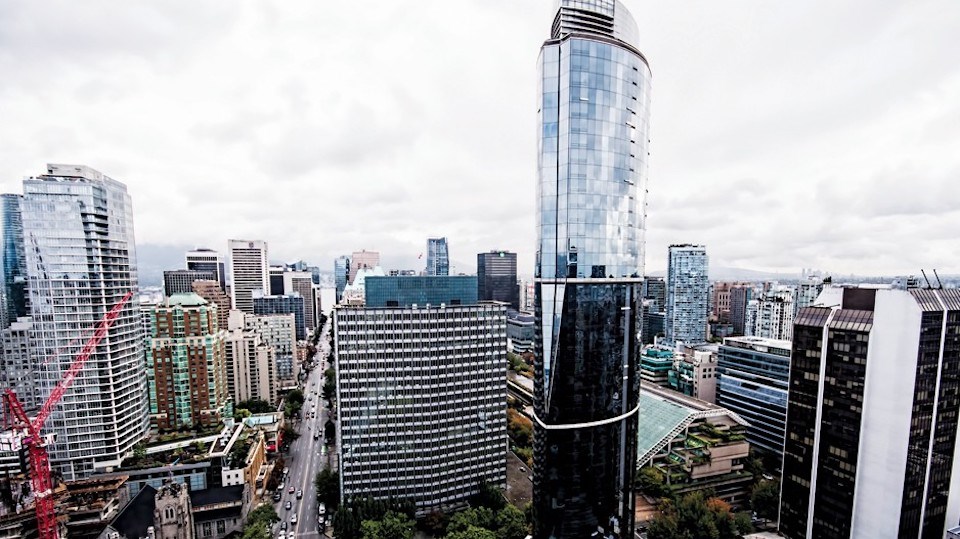Rising cap rates point to the importance of cash flows in the current investment market, complicating what’s being described as a “price discovery” phase as interest rates keep rising.
During heated markets, demand drives prices higher and cap rates lower as capital flows in.
But in the current environment, where recovering occupancies was followed by rising costs, lease rates have moved higher even as assets stopped trading. This has refocused attention on cash flow as a key measure of value.
“Over the past few years where we’ve had that cap rate compression, a lot of that total return has been driven by the value increases and not so much from the cash flow,” Jaclyn O’Neill, principal, investments, with BentallGreenOak told the Vancouver Real Estate Strategy & Leasing Conference on November 3. “Now we’re undoubtedly seeing some cap rate decompression, so there’s certainly some headwinds there, so the focus for us definitely is on cash flow.”
According to CBRE Ltd., cap rates across office, industrial and retail properties inched up in the third quarter. Residential and hotel properties saw minimal change, but upward pressure is building.
The income-producing potential of a property is critical both to meet costs and support valuations. Any decline in annual income suggests a weaker property, making strong, dependable tenants key.
With topline vacancies rising and a greater volume of sublease space shifting the market in favour of tenants, seasoned leasing broker Jeff Rank, senior vice-president, leasing, for British Columbia with QuadReal Property Group, said owners will be more likely to offer inducements to tenants rather than compromise on face rates.
“Most of the institutions are going to be in a position and in a defensive mode to keep their valuations up and will be prepared to give away more on the inducement side to make deals happen,” he said. “We’re not seeing a $50 rent turn into a $40 rent.”
CBRE data indicate that A-class lease rates held steady in the first nine months of the year at between $46 and $47 a square foot downtown, and inched up from $28.61 to $29.54 a square foot in suburban markets.
The emphasis on cash flow was recurring theme for speakers at the Western Canada Lodging Conference in Vancouver at the end of October. Hotels are operating assets whose worth is measured by cash flow in any market, and the current relationship between cash flow and asset values was reason for optimism.
“We’re certainly starting to see upward pressure on cap rates, but it’s not really directly related to the hike in interest rates,” Cindy Schoenauer, vice-president, hospitality and gaming with Cushman & Wakefield, said. “It’s more related to the rapid [average daily rate] growth that we’ve seen year to date.”
Vancouver’s average daily room rates increased 49 per cent last year, according to HVS Canada, outpacing the national growth rate of 34 percent.
The cash made for better performance relative to asset values, which largely held steady.
“It’s not that values are going down at this point in time, it’s more that they’re being offset by ADR growth,” Schoenauer explained.
Cap rate increases typically follow interest rates higher, HVS Canada senior managing partner Carrie Russell said. But similar to offices, the current shift is unusual given the strong growth in property income.
“Cap rates have to go up in an increasing interest rate environment, but currently income growth has been able to keep pace with that,” she said, noting that rising cap rates don’t signal distress as the hotel sector recovers. “The only distress that’s out there is distress that was pre-COVID and got pushed to the side while there was a public health crisis.”
This has made hotels, and other real estate assets with strong cash flow, attractive to investors.
“It’s an industry that’s a hedge against inflation,” Ed Kehdiguian, senior vice-president, CCWB Franchise Finance told the lodging conference. “The positive tailwind to that will eventually lead to some liquidity returning to the market.”
It’s a similar story in other segments of the commercial real estate sector, at least in Vancouver, where the perennial shortage of purchase opportunities will remain acute as buyers hold on to income-producing properties in an environment where cash is king.
Rank sees investor demand remaining strong despite a drop in deal-making in the second half of the year.
“Be very opportunistic on the acquisition side, because given the nature of our owners here, they’re staying where they were,” he told the leasing conference. “It’s going to be awhile, I think, before you see a crack in the armour on the acquisition side for the Vancouver market.”



